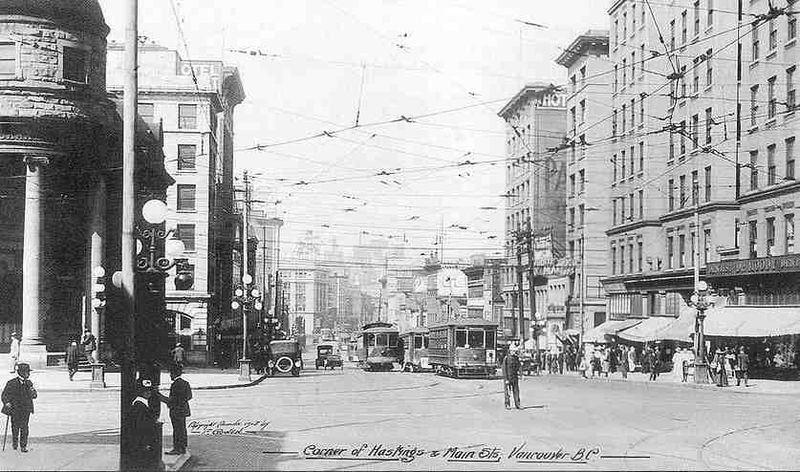A gap between the present and the past? Historical distance and history education Part I
9 Mars 2015 - 9:00am
 Historical distance is a complex problem for historians. Therefore, in a curriculum predicated on historical thinking, distance — the time between the events of the past and the present (Bevir, 2011; Phillips, 2013) — is an interesting area of inquiry for history educators and students. In order to treat this topic with integrity, this will be the first of three blog posts on historical distance. First, I will review how different schools of historical thought conceptualized the problem of historical distance; second, I will look at how temporal distance is being defamiliarized; and third, I will discuss historical distance in relation to history education.
Historical distance is a complex problem for historians. Therefore, in a curriculum predicated on historical thinking, distance — the time between the events of the past and the present (Bevir, 2011; Phillips, 2013) — is an interesting area of inquiry for history educators and students. In order to treat this topic with integrity, this will be the first of three blog posts on historical distance. First, I will review how different schools of historical thought conceptualized the problem of historical distance; second, I will look at how temporal distance is being defamiliarized; and third, I will discuss historical distance in relation to history education.
A major problem plaguing historians is that the past becomes like a great warehouse of events; consequently, the present is a great padlock that ensures the past is inaccessible. As time moves forward, historians become concerned with accessing the traces of the past. In other words, the “further away in time from us an event is, the greater the chances that the traces it has left behind, if any, are also going to disappear, making it more and more difficult for us to figure out what happened” (Kobayashi and Marion, 2011, p. 82).
Prior to the First World War, nineteenth century historicism (romantic historians) attempted to establish a connection between the past and the present, thereby reducing historical distance. While romantic historicism relied on a rigorous process for the collection of data, they situated the facts within a historic narrative based on continuity and progress. These narratives cannot be considered objective as they are predicated on the principles of “self, nation, reason, and spirit” (Bevir, 2011, p. 25–26). There were nationalistic motives inherent within the romantic historians’ narratives. Consequently, developmental historicism was not concerned with historical distance as they saw the present as a continuation and progression from the past.
Modernist historicism —which became prominent in the aftermath of the changes brought on by the First World War— turned to the problem of historical distance to justify rejection of any notion of continuity between the past and present. An awareness of the distinction between the present and past emerged in response to war. To overcome this distance, modernist historians turned to rigorous empirical methods, as a means of gaining knowledge. Insight into thought and intent of historical actors came through this empirical research. Historical narratives were constructed to fit the methodological, objective collection of data (Bevir, 2011; Phillips, 2013). Modernist historians argued that the temporal distance between the events of the past and the creation of narratives in the present could not be overcome.
Postmodernist historicism embraced the existence of historical distance and argued that historical writing was not aimed at actual truth but was simply a distinctive literary endeavour. Bevir (2011) illustrates the postmodernists treated facts as atomized entities and not influenced by present beliefs and prejudices. Therefore, in their treatment of facts postmodernists agreed with the modernists. But where they differ is that postmodernists thought that history was a literary endeavour and that all historical narratives were production of a past and not reproductions of the past (Bevir, 2011; Zele?ák, 2011). Whereas modernists focused on objectivity, postmodernists highlighted the importance of the literary endeavour inherent in the construction of narratives about the past.
Postfoundationalists argue that the concept of temporal historical distance is not a problem for historians; they dispel the modernist and postmodernist concerns with historical distance. The postfoundationalist approach to historical distance relies on the thinking that there is no given truth (Bevir, 2011). For postfoundationalists, historians are unable to access the intentions of historical agents; and, facts are only secured through the context of the historian’s present community and their concepts and theories. Therefore, postfoundationalists analyze historical distance as something that is not a problem for historical study.
The postfoundationalist approach to distance is grounded in the return to philosophical questions about the forms of justification and explanation that historians should adopt. For postfoundationalism, the past is not foreign; it is simply the past, as we understand in the future. Therefore, the problem lies not in needing to bridge the present and the past but determining how to describe the past. Postfoundationalism approaches the problems of describing the past — such as presentism — through philosophical argument (Bevir, 2011).
Historical distance is complex as evident by the different schools of historical thought and how they conceived of their distance from the events and people of the past. In the next post I will write about the contemporary research into historical distance. Historians are starting to defamiliarize the temporal concept of distance.
Have you reflected on your understanding of historical distance? Do you have any experience with the problem of historical distance in the classroom?
Works cited:
Bevir, M. (2011, December). Why historical distance is not a problem. History and Theory, Theme Issue, 50, 24-37.
Phillips, M. S. (2013). On historical distance. New Haven: Yale University Press.
Zele?ák, E. (2011, December). Indirect reference and the creation of distance in history. History and Theory, Theme Issue, 50, 68-80.
- Se connecter ou créer un compte pour soumettre des commentaires

